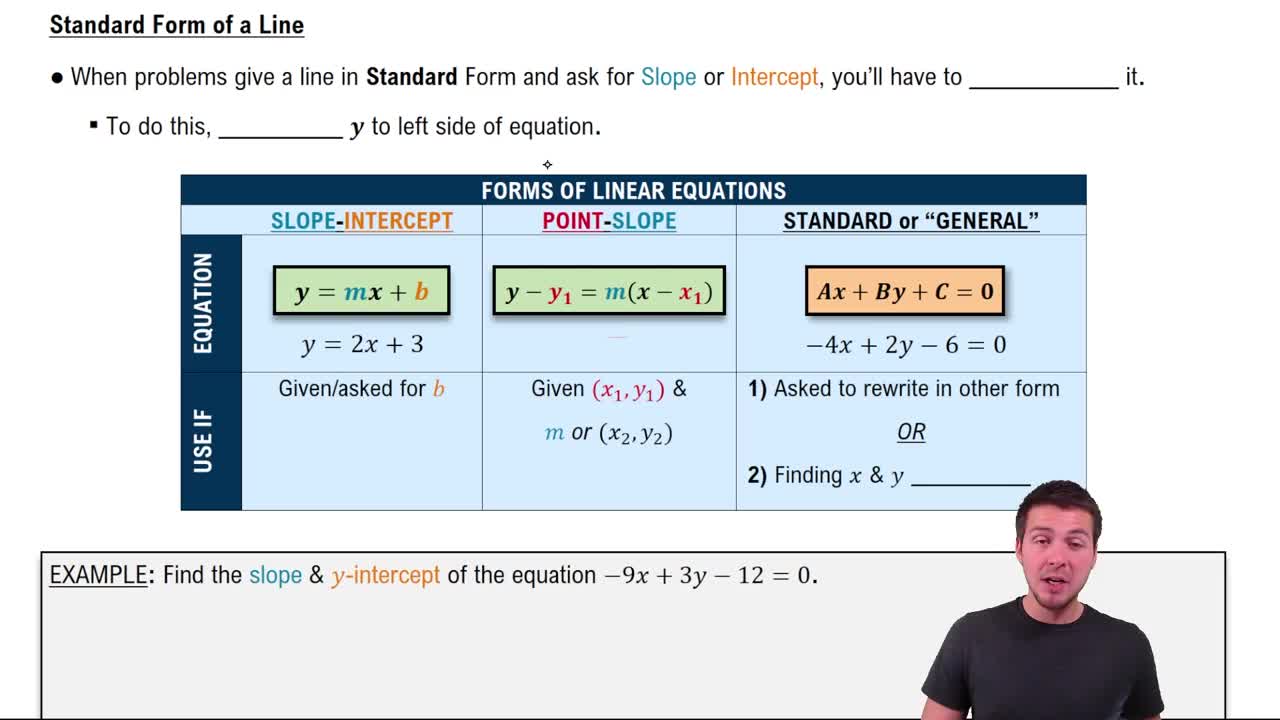Here are the essential concepts you must grasp in order to answer the question correctly.
Slope
The slope of a line is a measure of its steepness and direction, typically represented as 'm' in the slope-intercept form of a linear equation, y = mx + b. It is calculated as the ratio of the change in the y-coordinates to the change in the x-coordinates between two points on the line. A positive slope indicates the line rises from left to right, while a negative slope indicates it falls.
Recommended video:
Graphing Linear Equations
Graphing a linear equation involves plotting points that satisfy the equation on a coordinate plane and connecting them to form a straight line. To graph the equation, it is often helpful to convert it into slope-intercept form (y = mx + b) to easily identify the slope and y-intercept. This visual representation helps in understanding the relationship between the variables.
Recommended video:
Categorizing Linear Equations
Standard Form of a Linear Equation
The standard form of a linear equation is typically expressed as Ax + By = C, where A, B, and C are constants. This form is useful for identifying the x- and y-intercepts of the line, which can be plotted to aid in graphing. To find the slope from this form, one can rearrange the equation into slope-intercept form or use the coefficients directly.
Recommended video:
Standard Form of Line Equations
 Verified step by step guidance
Verified step by step guidance Verified video answer for a similar problem:
Verified video answer for a similar problem:

